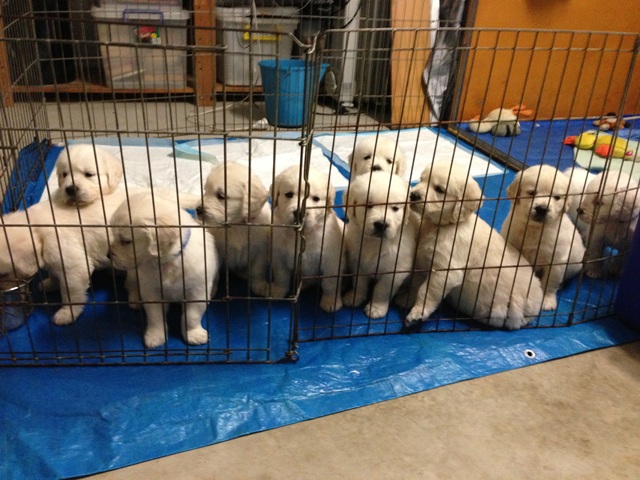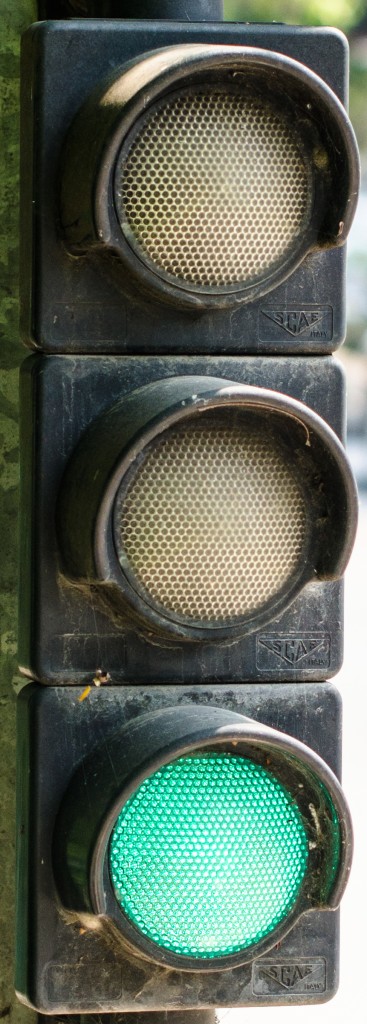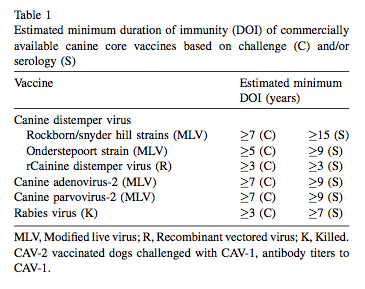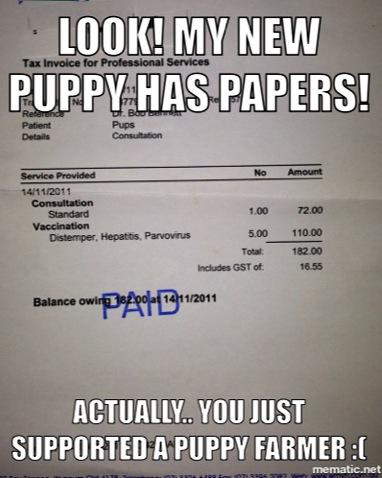So, today, I share a story from another Australian breeder on breeding a litter of golden retrievers, and how it went anything but according to planned. It’s a story on how ethical breeders struggle through hardship, and again illustrates that there is no money to be made from ethical breeding.
It’s funny because I have had dogs all my life, been a dog groomer for 16 years and this was always a dream to have a litter of my own. Well at least I can say I tried. It was a shame because I did what I set out to do and that was breed something for the show ring that was better than what I had which is what we all do, try to improve the breed. But I couldn’t keep the puppy, every time I looked at him I cried and it brought back the memories and I thought it wasn’t fair on him. It is so lovely to see photos of them all and how happy they are with their new families. That is the best part.
Well my first breeding experience was horrible . It has been three months and I still wake up in the middle of the night crying sometimes. There were great times and I ended up with 10 amazing puppies who are each adored by their new owners and I have had so many updates with the owners raving about how great their puppies are socially, at training and to live with. I am proud so proud of that.
However I am still so emotional every time I think about the experience as a whole. Here is a brief overview. I have been planning this litter for four years. I own both the bitch and stud dog and they are from amazing kennels that I have admired for over 15 years. I did every test and they passed with flying colours and had brilliant hip and elbow scores. They both have done well in showing and complemented each other well.

Zena at day 58.
We had a great mating and a text book pregnancy until 58 days. My bitch seemed to double in size over night. Within 24 hours we were at the vet having an ultrasound. We thought there were six pups and the vet was worried about the pups heart rates. We went home and were on watch for signs of labour. We went back for a scan and the heart rates had picked up but my bitch hadn’t. Another 24 hours and my bitch wasn’t looking well and her joints had started to swell. I was syringing lectade into her as she wouldn’t eat or drink.
She couldn’t get comfortable and I felt she was trying to be brave when I was with her so as heart breaking as it was I sat outside the door and left her to try and settle. It broke my heart to hear her try to lie down. She stood the whole time!! I kept calling the vet and emergency vet to ask questions and thank goodness for the emergency vet at 3am talking to me or I would have gone insane! Everyone kept saying “just watch her it sounds like she is in labour”, “any time now, just be patient”, “the first stages can take a while”. I was home on my own and wanted to be strong for my girl so would go outside and sit down and just sob, wipe my eyes and go back into her with a huge smile and tell her what a great job she was doing. I rubbed her back and tummy and made a sling to try and hold her belly to give her a little relief. We both didn’t sleep for two days.
The next day I couldn’t take it and knew she had had enough too. I took her into the vet and we decided to give her a cesarian. This is the part I feel so very terrible about. I started to have chest pains, a panic attack. I couldn’t breathe and was shaking terribly. My girl kept looking at me and I was falling apart. The nurses made me go outside for a walk but I felt so dreadful leaving Zena alone. I had done this to her, I had wanted this litter and I had made the commitment to do this with her!! The last thing I said to the vet was “Whatever happens, save my girl”.
I couldn’t go in for the cesarian and stood outside the door. Then I heard the last thing anyone wants to hear. “Holy shit, get more help.” Time just slowed as every horrible possibility went through my mind. After what felt like an eternity the most amazing sound, second only to the cry of my own children, was the scream of a tiny little baby being born. That’s when the tears of the last couple of hours came and with every cry of another puppy being born I felt the pain in my chest ease. I heard them count and say there were 10 puppies! 10! I was expecting 6 not nearly double that! I had the courage to go in and help with the puppies but no one would say anything about Zena. All I was told was it wasn’t good and they were doing everything they could.
I couldn’t bring myself to look into the theatre but the vet talked to me through the door. He said he had got her back but it was still to early to tell. What????? What do you mean got her back? It turns out the vet thinks she had a condition called maternal hydrops and said each puppy was surrounded my approximately 1-2 litres of fluid! No wonder Zena was so big with 10 puppies that is almost 20 litres of fluid and she was a slight golden retriever to begin with! After the pups she looked like a skeleton. What had seemed like a good healthy weight gain had just been a huge belly of puppies and fluid.
Her heart had stopped beating twice on the table and they had to shock her to bring her back. With that much fluid around it was very dangerous I am told. She was then monitored very closely as her heart beat was extremely rapid. It was decided to take her to the emergency specialist vet for overnight observation. Due to recent parvovirus outbreaks in the area I couldn’t leave the puppies so took them home with me. It was now midnight, and my birthday, happy birthday to me.

Zena’s newborn puppies.
I now had to learn how to hand feed new born puppies. Not to mention toilet them and burp them. I didn’t even know puppies burped! Thank goodness for my ‘bible’ by Dr Karen Hedburg. I had read it cover to cover and was set up for most just in case scenarios so had some bottles on hand and cotton balls for toileting. It took me 1.5 hours to hand feed all 10 puppies and I had to do this every two hours. After three days of no sleep it is a miracle they all survived. The next day I was able to bring Zena home and thank goodness for friends coming over to help for a couple of hours and my vet doing house calls and checking on the puppies at home.

Zena and her 3 day old babies.
Zena was a brilliant mum but after her trauma there was no way I was leaving her. I slept on the couch next to her whelping box for three weeks.
Surely there can’t be more?? Yep, two bouts of mastitis with me doing massage, hot packs and cabbage leaves. Zena was on antibiotics so I had puppies with the runs on and off for five weeks and nearly loosing three of them with an unknown virus. There were many nights I went to sleep sitting up on the lounge with a puppy or two down my shirt to keep them warm and hope when I woke up they were still with me. Then there were the times all of them would somehow escape their run in the garage and 10 puppies had had a ball pooping and weeing all over the garage and rolled in it.
Then there was the great times! They all weaned without a problem and thrived. We would all play outside for hours rolling around in the grass with 10 happy fat puppies. We found amazing homes for each and every one of them and they all were perfect little balls of fluff who were nearly fully toilet trained by 8 weeks when they left us.

Zena’s puppies at 6 weeks old.
So would I do this again? Absobloodylutely NOT! Everyone says I will change my mind but I just can’t see it. I am proud of the puppies I produced. All the research I have done says it is a rare condition that is suspected to happen when two lines don’t blend well and most bitches go on to have a normal second litter. I have had breeders of 30 years who say they have never had a litter with so many issues. I don’t see how I could ever put Zena through something like that again. I did this alone as a single mother of three children. There were lots of people that said they would help me but when it came down to it people had their own lives and it was very lonely and exhausting.
I was scared to say anything thinking that I must have done something wrong but going over everything I can see it was just a case of bad luck.
My question is has anyone had a traumatic litter? How long till you got over the trauma of it? Zena is perfectly happy and healthy and loving life jumping on the trampoline and wrestling with the other dogs but I still struggle with the memories.
I wouldn’t wish this experience on any responsible breeder but I wonder if a puppy farmer’s first litter cost upward of $6k if that would deter them!!
 Necessities
Necessities






